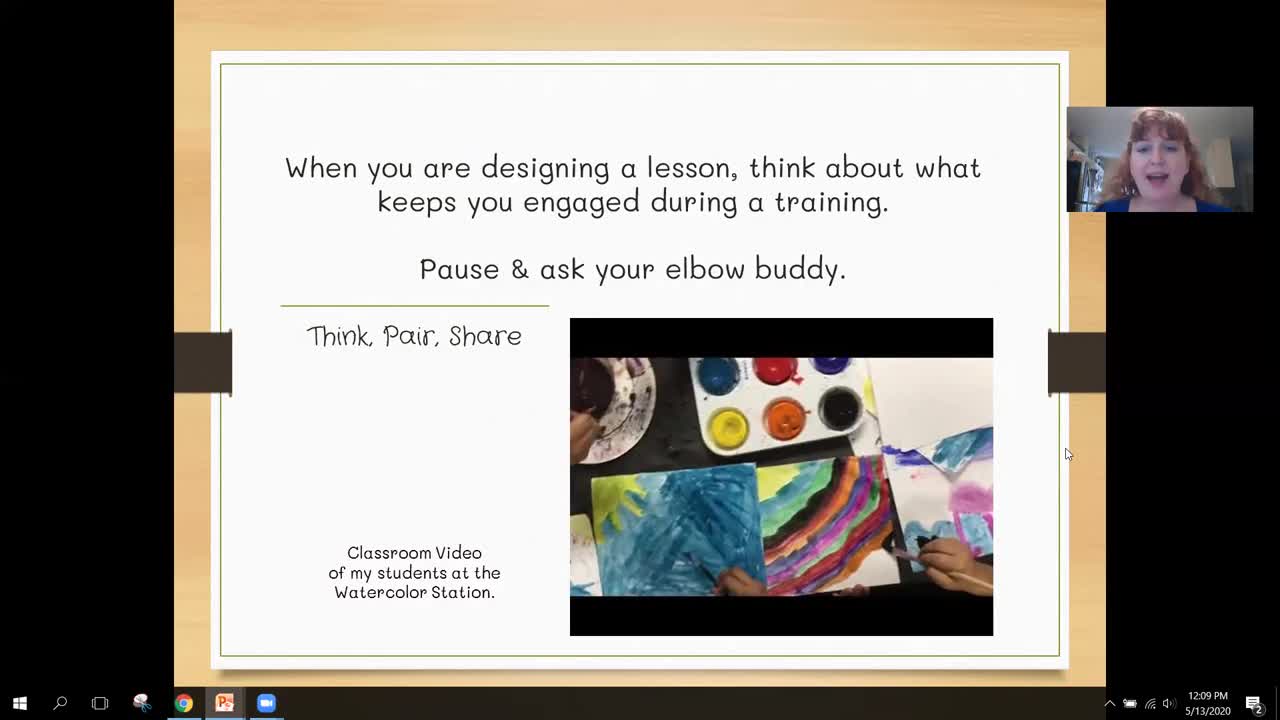During the Hellenistic areas, philosophers, scientists, poets, and writers moved to the new greek cities of Southwest Asia and Egypt.
During the Hellenistic areas, philosophers, scientists, poets, and writers moved to the new greek cities of Southwest Asia and Egypt.
Alexandria, for example, served as the Greek capital of Egypt and was a major center in learning.
Many scholars were attracted to Alexandria's library containing more than 500,000 scrolls. Alexandria also had museum that attracted scholars to research. The city?s reputation as a place of learning and its locations on mediterranean sea contributed to Alexandria?s economic growth.
Today, Alexandria remains a vital scene in Egypt where nearly 4 million people live and work.
Greek Architect served a major role in expanding Alexander?s empire.
They planned public building projects for new cities that were being founded and for old cities that were building rebuilt.
Hellenistic kings wanted to make this cities like Athens and like other cultural cities in Greece. They were willing to spend huge amounts of money to do so. These kings wanted to line the streets with Greek temples, theaters and bathe.
Hellenistic kings and other wealthy citizens hired Greek sculptors who created thousands of statues for towns and cities.
Hellenistic sculptures proved as talented as sculpture in Greece? Golden Age. These sculptures, however, developed new styles. They did not carve ideal figures to reflect beauty and harmony. Instead, they showed people a more realistic style. They even created statues that looked angry or looked sad.
Hellenistic rules also supported talented writers. As a result, poets and writes produced a large amount of literature during the Hellenistic era. Very little of this writing has survived today.
One work that we do know about is an epic poem called Argonautica written by Apollonius of Roads. The poem tells a story of Jason and his band of heroes. You may have read a modern version of this poem called Jason and the Argonauts. Jason?s band sailed the seas seeking a ram with a golden fleas. Along the way, they had many adventures.
Another poet, Theocritus, wrote short poems about the beauty of nature.
Athens remain the center for Greek theater. There, writers of place produced comedies not tragedies. These comedies are known as Greek New comedy. However, the comedies of the Hellenistic era were not like the comedies of Greece? Golden Age. Those of the Hellenistic era did not poke fun of Greek leaders. Instead, the plays told stories of love and relationships of ordinary people.
One of the best known of the new playwrights is Menander. He lived from 343 BC to 291 BC and is considered most important poet of Greek New Comedy. The Temple of Apollo at Delphi had inscription that read ?Know thyself.? Making a humorous comment on that inscription, ?this Know Thyself is a silly proverb in some ways.To know the man next door is a much more useful rule.?
His works were later adopted by Roman writers. Through his works, Menander influenced the development of comedy through the Renaissance and even comedy today.
During the Hellenistic Era, Athens continued to support Greek philosophers. These philosophers try to answer questions like ?What is a good life?? And ?How can people find peace of mind in a troubled world??
The two most important Hellenistic philosophers were Epicurus and Zeno. Epicurus founded a philosophy known as Epicureanism. He told his students that finding happiness was the goal in life. He believed that the way to be happy was to avoid pain. Today, the word Epicurean, means the love of physical pleasure such as good food or comfortable surroundings. For Epicurus, however, pleasure meant spending time with friends. It meant learning not to be upset about problems in life. Epicureans avoided worry. They limited their wants and lived simply.
A Finnishian philosopher named Zeno developed the philosophy called Stoicism. Zeno did not have the money to run a lecture hall which to teach. Instead, he taught at a building called the Painted Porch. The Greek word for porch was Stoic. The term Stoicism thus came from the Greek word Stoic. The stoics claim that people who are guided by their emotions lived unhappy lives. They believe that happiness is a result for using reason. Sound thinking, they thought, should guide decisions. Today, stoic is describe to someone not affected by joy or sadness. Unlike epicureans, stoic people have a duty to serve their community. The ideas of stoics would later influence Roman thinkers.
Science also flourished during the Hellenistic era. Even though Hellenistic scientists used simple instruments, they performed simple experiments and developed new theories. Aristoricus claimed that the sun was the center of the universe. He said that earth circled the sun. At the time, other astronomers rejected his ideas. They thought the earth was the center of the universe. Euclid thought others his theories about geometry. If you study geometry today, you will learn the same topics studies by ancient Greeks.
Another topic is Eratosthenes who was the chief librarian at the library of Alexandria. After studying research, Eratosthenes concluded that the earth was round. He then used his knowledge to measure earth?s circumference or the distance around the earth. In order to measure circumference, Eratosthenes put two sticks on the ground far apart from each other. When the sun was directly over one stick, he measured the shadows. By measuring the shadows he was able to calculate the curve of the earth?s surface. Using his instruments, Eratosthenes was able to calculate the distance around earth. Remarkably, his estimated was within a 185miles of the actual distance.
Using a similar method, he tried to determine how far it was to the sun and to the moon. Although his calculations were not accurate, he concluded that the sun was much larger than the moon.
Euclid of Alexandria advanced the field of mathematics. His best known book, Elements, describes plane geometry. Plane geometry is one branch of mathematics. He shows how points, lines, angles and surfaces relate to one another. Around 300BC, Egypts King asked Euclid if he knew a faster way to learn geometry. Euclid answered that with ?There is no royal way to learn geometry.? In other words, if the King wanted to understand Euclid?s ideas, he would have to study. Euclid?s theory still influence mathematicians today.
The most famous scientist of the Hellenistic era was Archimedes. He worked on solid geometry. He studied ball-like shapes called spheres and tube-like shapes called cylinders. He also figured out the value of Po which was used to measure the area of circle. It is represented by the Greek symbol standing for Pi.
Archimedes was also an inventor. He developed machinery and weapons of war. Archimedes was known to be a modest man. According one story, however, he boasted, ?give me a lever and a place to stand, and I will move the earth.? The King of Syracuse heard of Archimedes? boast, so he asked him to build a machine to defend the city. So Archimedes designed catapults. These machines can throw rocks, arrows and spheres over long distances. When Romans attacked Syracuse in 212 BC, the catapults drove them back. It took the Romans 3 years to capture the city. During the massacre that followed, Archimedes was killed.
Hellenistic thought and culture had long lasting effects. The mathematicians Hypatia lived in Alexandria around AD 400 more than 700 years after the Hellenistic era. She kept up the Greek tradition of studying philosophy and mathematics. Like the Greek thinkers of the past, Hypatia also championed the use of reason over superstition. Here are two of her quotes, ?To teach superstition as truth is a most terrible thing?, ?Reserve you right to think. For even to think wrongly is better than not to think at all?.
If you have questions, make sure you ask now. There are some questions here we want you to get done. Take your time. You can go back in this podcast. You can look in your textbook. We have other resources online. And look this up because you can see alot of this on the quiz.
Alexandria, for example, served as the Greek capital of Egypt and was a major center in learning.
Many scholars were attracted to Alexandria's library containing more than 500,000 scrolls. Alexandria also had museum that attracted scholars to research. The city?s reputation as a place of learning and its locations on mediterranean sea contributed to Alexandria?s economic growth.
Today, Alexandria remains a vital scene in Egypt where nearly 4 million people live and work.
Greek Architect served a major role in expanding Alexander?s empire.
They planned public building projects for new cities that were being founded and for old cities that were building rebuilt.
Hellenistic kings wanted to make this cities like Athens and like other cultural cities in Greece. They were willing to spend huge amounts of money to do so. These kings wanted to line the streets with Greek temples, theaters and bathe.
Hellenistic kings and other wealthy citizens hired Greek sculptors who created thousands of statues for towns and cities.
Hellenistic sculptures proved as talented as sculpture in Greece? Golden Age. These sculptures, however, developed new styles. They did not carve ideal figures to reflect beauty and harmony. Instead, they showed people a more realistic style. They even created statues that looked angry or looked sad.
Hellenistic rules also supported talented writers. As a result, poets and writes produced a large amount of literature during the Hellenistic era. Very little of this writing has survived today.
One work that we do know about is an epic poem called Argonautica written by Apollonius of Roads. The poem tells a story of Jason and his band of heroes. You may have read a modern version of this poem called Jason and the Argonauts. Jason?s band sailed the seas seeking a ram with a golden fleas. Along the way, they had many adventures.
Another poet, Theocritus, wrote short poems about the beauty of nature.
Athens remain the center for Greek theater. There, writers of place produced comedies not tragedies. These comedies are known as Greek New comedy. However, the comedies of the Hellenistic era were not like the comedies of Greece? Golden Age. Those of the Hellenistic era did not poke fun of Greek leaders. Instead, the plays told stories of love and relationships of ordinary people.
One of the best known of the new playwrights is Menander. He lived from 343 BC to 291 BC and is considered most important poet of Greek New Comedy. The Temple of Apollo at Delphi had inscription that read ?Know thyself.? Making a humorous comment on that inscription, ?this Know Thyself is a silly proverb in some ways.To know the man next door is a much more useful rule.?
His works were later adopted by Roman writers. Through his works, Menander influenced the development of comedy through the Renaissance and even comedy today.
During the Hellenistic Era, Athens continued to support Greek philosophers. These philosophers try to answer questions like ?What is a good life?? And ?How can people find peace of mind in a troubled world??
The two most important Hellenistic philosophers were Epicurus and Zeno. Epicurus founded a philosophy known as Epicureanism. He told his students that finding happiness was the goal in life. He believed that the way to be happy was to avoid pain. Today, the word Epicurean, means the love of physical pleasure such as good food or comfortable surroundings. For Epicurus, however, pleasure meant spending time with friends. It meant learning not to be upset about problems in life. Epicureans avoided worry. They limited their wants and lived simply.
A Finnishian philosopher named Zeno developed the philosophy called Stoicism. Zeno did not have the money to run a lecture hall which to teach. Instead, he taught at a building called the Painted Porch. The Greek word for porch was Stoic. The term Stoicism thus came from the Greek word Stoic. The stoics claim that people who are guided by their emotions lived unhappy lives. They believe that happiness is a result for using reason. Sound thinking, they thought, should guide decisions. Today, stoic is describe to someone not affected by joy or sadness. Unlike epicureans, stoic people have a duty to serve their community. The ideas of stoics would later influence Roman thinkers.
Science also flourished during the Hellenistic era. Even though Hellenistic scientists used simple instruments, they performed simple experiments and developed new theories. Aristoricus claimed that the sun was the center of the universe. He said that earth circled the sun. At the time, other astronomers rejected his ideas. They thought the earth was the center of the universe. Euclid thought others his theories about geometry. If you study geometry today, you will learn the same topics studies by ancient Greeks.
Another topic is Eratosthenes who was the chief librarian at the library of Alexandria. After studying research, Eratosthenes concluded that the earth was round. He then used his knowledge to measure earth?s circumference or the distance around the earth. In order to measure circumference, Eratosthenes put two sticks on the ground far apart from each other. When the sun was directly over one stick, he measured the shadows. By measuring the shadows he was able to calculate the curve of the earth?s surface. Using his instruments, Eratosthenes was able to calculate the distance around earth. Remarkably, his estimated was within a 185miles of the actual distance.
Using a similar method, he tried to determine how far it was to the sun and to the moon. Although his calculations were not accurate, he concluded that the sun was much larger than the moon.
Euclid of Alexandria advanced the field of mathematics. His best known book, Elements, describes plane geometry. Plane geometry is one branch of mathematics. He shows how points, lines, angles and surfaces relate to one another. Around 300BC, Egypts King asked Euclid if he knew a faster way to learn geometry. Euclid answered that with ?There is no royal way to learn geometry.? In other words, if the King wanted to understand Euclid?s ideas, he would have to study. Euclid?s theory still influence mathematicians today.
The most famous scientist of the Hellenistic era was Archimedes. He worked on solid geometry. He studied ball-like shapes called spheres and tube-like shapes called cylinders. He also figured out the value of Po which was used to measure the area of circle. It is represented by the Greek symbol standing for Pi.
Archimedes was also an inventor. He developed machinery and weapons of war. Archimedes was known to be a modest man. According one story, however, he boasted, ?give me a lever and a place to stand, and I will move the earth.? The King of Syracuse heard of Archimedes? boast, so he asked him to build a machine to defend the city. So Archimedes designed catapults. These machines can throw rocks, arrows and spheres over long distances. When Romans attacked Syracuse in 212 BC, the catapults drove them back. It took the Romans 3 years to capture the city. During the massacre that followed, Archimedes was killed.
Hellenistic thought and culture had long lasting effects. The mathematicians Hypatia lived in Alexandria around AD 400 more than 700 years after the Hellenistic era. She kept up the Greek tradition of studying philosophy and mathematics. Like the Greek thinkers of the past, Hypatia also championed the use of reason over superstition. Here are two of her quotes, ?To teach superstition as truth is a most terrible thing?, ?Reserve you right to think. For even to think wrongly is better than not to think at all?.
If you have questions, make sure you ask now. There are some questions here we want you to get done. Take your time. You can go back in this podcast. You can look in your textbook. We have other resources online. And look this up because you can see alot of this on the quiz.





















